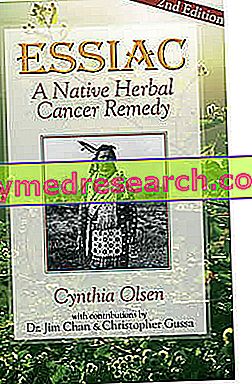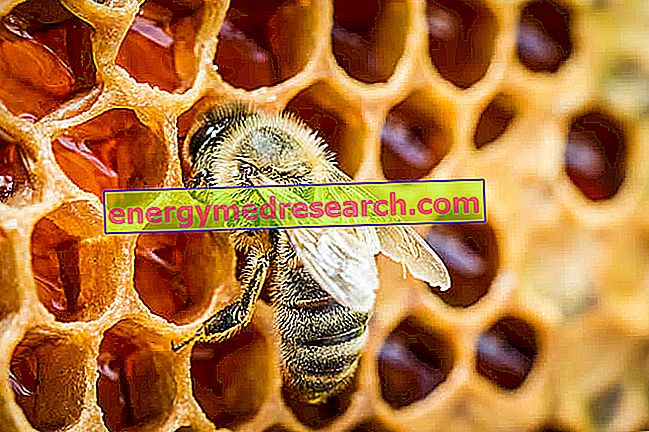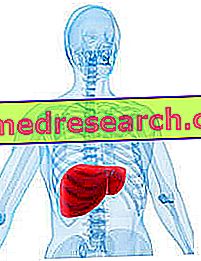Essiac is the name of a supplement, generally a preparation for herbal teas, promoted as a valid natural remedy against cancer and other diseases.
Promotion strategies for Essiac and other "miraculous" natural remedies
Essiac is the striking example of the many natural products that periodically come to the fore due to their "miraculous properties", magnified through:

- books and articles artfully sewn around the product to give it a semblance of scientificity when there is very little scientific (for example citing in vitro studies or published in non-peer-reviewed journals, financed by companies or persons whose conflict of interest is obvious, failing to mention the studies with contrary results);
- a millenary usage tradition that remotely recalls witchcraft, that is the remedies used by our ancestors against diseases;
- a group of people ready to swear on the effectiveness of the natural product, moving video testimonies, etc .;
- massive online advertising campaigns and / or aggressive commercial strategies such as multilevel marketing;
- attempt to create and nurture currents of thought in favor of using the product through blogs, websites and social networks; for this purpose we use: interventions in discussion groups subsidized by companies or people involved in the trade of the product; severe moderation of dissenting opinions in blogs, forums and social networks; exploitation of the image of health professionals who have economic interests in magnifying the product ...;
- use of the "theories of conspiracy" that are rooted in the economic crisis and in the distrust of many towards the system; in short, according to these theories, pharmaceutical causes would obscure, or worse, boycott, the effectiveness of natural remedies to sell their drugs.
In effect, the Essiac is: a) the object of pseudoscientific books and articles; b) exploits the so-called psychology of shamanism (it is said that its inventor, the Canadian nurse Rene Caisse, learned the original formula of the Essiac as a remedy used by a tribe of Native Americans); c) in Canada, specifically in Ontario, where the remedy was born and developed around the middle of the last century, there were many people ready to swear that they had recovered from cancer; d) for all the other points everyone can feed or extinguish their doubts by weighing critically the interventions in the main blogs and forums in the sector. Just looking on the net it is easy to come across an article where a professional A, expert in nutriterapia, attacks a colleague Bee who spoke of the Essiac as useless and even harmful according to official medicine, failing to talk about the studies that attest to the possible efficacy, and without providing sufficient evidence to support health hazard. In short, thanks to the comments of readers, in the eyes of a non-expert the article seems a sort of crucifixion of the professional B: all talking about the pharmaceutical companies and their huge profits linked to cancer therapies, to shouting at the scandal, to point the finger at the official medicine, the doctors sold, to take on the clothes of the pure, of the defenders of the people who constantly suffer the harassment of the powerful. Considering that the average reader does not have the necessary technical knowledge to assess whether he is right A or B, before leaving such comments he should at least appeal to some common sense and compare, for example, the curricula of the two experts. Well, searching online for information on professional A, one easily realizes a clear conflict of interest concerning the promotion of the Essiac, being clear its interests in the trade and in the promotion of the same, as well as of books related to it. Obviously this aspect has nothing to do with the efficacy of the Essiac or the scientific competence of the professional, but it certainly does understand how around these "miraculous" supplements rotate a flourishing business. In general, the mistake that many people make is to raise critical points towards official medicine, naively embracing alternative medicines as well and ideal only because they attack the dominant health system, whose limitations and defects - which are typical of the man they bear - they are necessarily things already manifested. The same reasoning is also applied to the other aspects that govern society, including political thought. Why then do many readers not apply the same rigor of thought, used with conventional drugs, towards the Essiac and other "miraculous" natural remedies? The difference is that when one reads about new miraculous natural products, most readers want ... to believe. We are all in search of well-being and the key to health, especially those who have lost it and have already tried everything to find it ... so we want to believe in what we read. At that moment we do not pay attention, we lower intellectual defenses and we are not able to understand the logical error of reasoning; let's move from one extreme to another, unaware puppets tossed around in the storm generated by the clash of conflicting economic interests. As long as it is natural restoratives it is an account, but when we talk about "anticancer" supplements the moral question and the problem are magnified; making money on these products means accepting the fact that someone could abandon conventional therapies (which, albeit with their limits, maintain a more or less wide effectiveness depending on the case) to embrace an alternative therapy without scientific efficacy, with all the consequences of case. Not to mention the risk of drug interactions and fueling distrust of official medicine, which despite its limitations has in any case contributed to doubling the average life span of human beings in just over a century.
Property of the Essiac
Composition
After the necessary introductory digression, we move on to the scientific analysis of the Essiac. First of all, its composition is not perfectly standardized and this creates problems for the application of studies from one product to another. However Essiac, whose formulation (like any "magic potion worthy of respect") has remained secret for many years, is a mixture of wild herbs (common in North America), generally: sorrel, internal rind of slippery elm, burdock and Indian rhubarb roots ( Rheum palmatum, Rumex acetosa, Ulmus fulva, Arctium lappa ).
Again on the alleged plots of pharmaceutical companies
For those who masticate the subject of "natural remedies", it is pointless to repeat that even in this case there is no certain evidence of efficacy and reliable documentation; moreover, the theory of boycott of pharmaceutical companies does not stand: it is true that these companies seek profit, they would not exist without it, but precisely for this reason if the Essiac had proven to cure cancer, they would have been buying the business for a long time. Although, being a mixture of herbs, the Essiac is not the most suitable example, it is good to remember that natural extracts cannot be patented; despite this, it is sufficient to make small chemical changes (even a single atom) on the structure of the characterizing active principle, to demonstrate that the additional benefits outweigh the risks, and the patent becomes applicable. So it does not hold up the conspiracy theory that pharmaceutical companies boycott natural remedies for profit reasons: most drugs come from natural substances, so because they are looking for profit, pharmaceutical companies are very careful about what nature offers us .
Property of the Essiac
The claims used for the commercial promotion of the Essiac paint it as a valid remedy for: strengthening the immune system, improving well-being, reducing pain, increasing appetite, reducing the volume of tumors and increasing survival. To this are also often added antioxidant, detoxifying / purifying, anti-inflammatory, energizing and balancing properties of digestive functions.
Mode of use
Under the term Essiac supplements are marketed in solid form, in the form of preparations for herbal tea or liquid: the dosage, the composition and the way of use vary from company to company. In general, it is recommended to use it in the form of herbal tea prepared with water (some recommend it minimally mineralized, avoiding tap water), leaving a teaspoon of the mixture in infusion or decoction for a few minutes; it is advisable to take it on an empty stomach two hours before or after meals, for a period of at least one or two years.
Does Essiac cure cancer?
A review1 of the Essiac literature and related formulations clearly shows the absence of quality clinical studies to support its traditional uses. Weak evidences5, 6, 7, 8 deriving in large part from in vitro studies6, 7, are completely insufficient to attribute anticancer properties to Essiac (... but as it happens in these cases they are sufficient to feed the need for further experimentation, which presumably will make the remedy survive from a commercial point of view for several years, like saying that history will repeat itself as for other natural products until the consumer changes it). For the avoidance of doubt, it should be pointed out that the scientific weight of the few studies reporting the spontaneous healing of patients treated with Essiac5.8 is considerably reduced by the possibility, founded and statistically characterized, that a small part of patients undergo spontaneous recovery from the disease . Not to mention the placebo effect.
Returning to the studies, what has been demonstrated for the Essiac inside a test tube has not found sufficient confirmation, neither in vitro2 nor in vivo3. On the contrary, opposite effects were also obtained in one study9 (the Essiac stimulated the growth of breast cancer tumor cells in the cellular models studied). The ability to improve the quality of life of cancer patients, in particular women with breast cancer4, also seems unfounded.
The position of the world's leading anti-cancer foundations, such as the American Cancer Society, leaves no room for interpretative doubts: the available scientific evidence does NOT support the use of Essiac for the treatment of cancer in humans.
Safety of use and side effects
There are also many shadows on these aspects, in the sense that due to the lack of studies and the different formulations marketed under the name "Essiac", the absence of side effects cannot be excluded. As mentioned, the authors of one study9 conclude that the Essiac can stimulate the growth of breast cancer cells in vitro; this, as we have seen, does not have a great scientific weight and shows how in these "test tube" studies we often end up by showing everything the opposite of everything.
Bibliography
- J Soc Integr Oncol. 2009 Spring; 7 (2): 73-80. Essiac: systematic review by the natural standard research collaboration. Ulbricht C, Weissner W, Hashmi S, Rae Abrams T, Dacey C, Giese N, Hammerness P, Hackman DA, Kim J, Nealon A, Voloshin R.
- Anticancer Res. 2006 Jul-Aug; 26 (4B): 3057-63. An in vivo analysis of the Essiac herbal compound. - Leonard BJ, Kennedy DA, Cheng FC, Chang KK, Seely D, Mills E.
- Nutr Cancer. 2007; 58 (2): 188-96. Evaluation of the antiproliferative effects of Essiac on in vitro and in vivo models of prostate cancer compared to paclitaxel. Eberding A, Madera C, Xie S, Wood CA, Brown PN, Guns ES.
- J Altern Complement Med. 2006 Dec; 12 (10): 971-80. Trial of Essiac to ascertain its effect in women with breast cancer (TEA-BC). Zick SM, Sen A, Feng Y, Green J, Olatunde S, Boon H.
- Can J Urol. 2005 Oct; 12 (5): 2841-2. Remission of hormone-refractory prostate cancer attributed to Essiac. Al-Sukhni W, Grunbaum A, Fleshner N.
- J Altern Complement Med. 2004 Aug; 10 (4): 687-91. Inhibition of prostate cancer-cell proliferation by Essiac. Ottenweller J, Putt K, Blumenthal EJ, Dhawale S, Dhawale SW.
- Anticancer Res. 2007 Nov-Dec; 27 (6B): 3875-82. In vitro analysis of the Essiac herbal compound. Seely D, Kennedy DA, Myers SP, Cheras PA, Lin D, Li R, Cattley T, Brent PA, Mills E, Leonard BJ.
- Curr Oncol. 2009 Aug; 16 (4): 67-70. Regression of follicular lymphoma with Devil's Claw: coincidence or causation? Wilson KS.
- Essiac and Flor-Essence herbal tonics stimulate the in vitro growth of human breast cancer cells. Kulp KS, et al. - Breast Cancer Res Treat. 2006 Aug; 98 (3): 249-59. Epub 2006 Mar 16.



